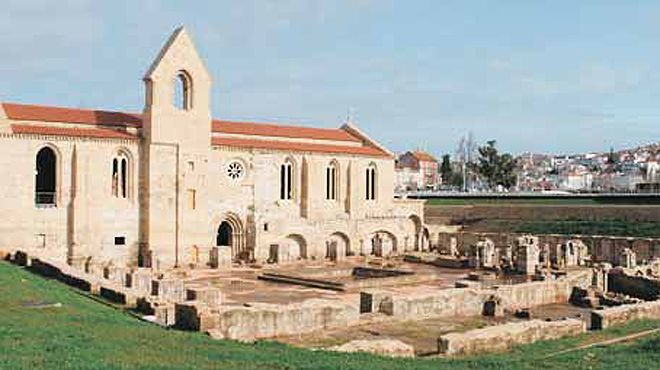Mosteiro de Santa Clara-a-Velha

Monuments
The Mosteiro de Santa Clara was built in 1314 at the orders of the Queen Saint Isabel of Aragon, replacing a small convent of nuns of the Order of St. Clare, founded in 1286. The building was completed in 1330, having been designed by the architect Domingos Domingues, who had previously worked on the Mosteiro de Alcobaça.
This convent is a fine example of the architecture of that period, being notable for the size of the church and cloister and the stone vault that covers the three naves of the church, all of which are of the same size. Because of its location on the banks of the River Mondego, the convent was subjected to frequent floods that led to the building of an upper floor and the abandonment of the almost permanently submerged ground floor. In the 17th century, the king Dom João IV commissioned the building of a new convent at a high point in the city. This new convent was given the name of Santa Clara-a-Nova, and the nuns moved there in 1677. The original convent, which became known as Santa Clara-a-Velha, was abandoned and left to fall into ruins.
At the end of the 20th century, the building was subjected to in-depth restoration work, which uncovered the original structures and led to the discovery of a vast and diversified range of treasures. Now open to the public once again, the convent offers its visitors a spacious outdoor leisure area in a tour that includes the church and the restored archaeological structures. At the Visitor Centre, besides the exhibition of the objects that were found here, laid out in accordance with their importance in the life of the convent, audiovisual media are used to present the history of the site and its restoration.
3040-266 Coimbra
Tuesday-Sunday: April-September: 10 a.m.-7 p.m.; October-March: 10 a.m.-6 p.m.;
Closed: Mondays, 1st January and 25th December.
- Total
- Total
- Partial
- Toilets
- Visual impairment




 Explore
Explore 
 Remember and Share
Remember and Share 


